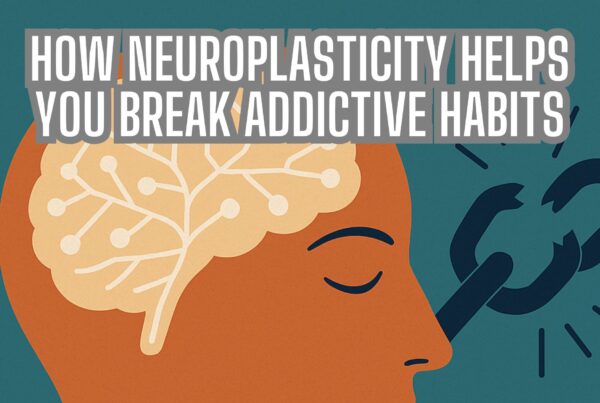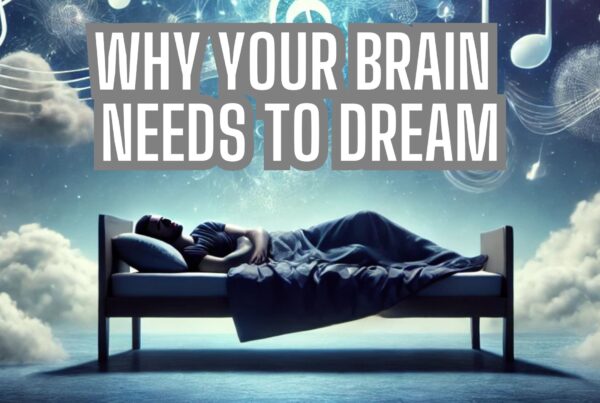The Mystery of Consciousness: Why We Still Can’t Explain Our Inner Lives
What is consciousness? At first glance, it seems an easy enough question. It’s the very thing you’re using right now to read this sentence—the voice in your head, the feeling of being you. It’s the taste of chocolate, the sting of heartbreak, and the jolt of hearing your name across a crowded room. Consciousness is your awareness, your self. And yet, for all its familiarity, it remains one of the most baffling mysteries science and philosophy have ever encountered. In this blog, we’ll be exploring the mystery of consciousness.
Despite immense advances in neuroscience, psychology, and artificial intelligence, we’re still no closer to answering one of life’s most profound questions: why does any of it feel like anything? This blog explores the enigma of consciousness through the lens of current scientific thought and philosophical debate. It delves into what we know, what we don’t, and the contentious battleground where minds from both camps clash—sometimes bitterly—over what it means to be.
The “Hard Problem” and How It Reframed Everything
In 1994, Australian philosopher David Chalmers introduced a term that would go on to reshape the modern study of consciousness: the Hard Problem. While scientists had made good progress on what Chalmers dubbed the “easy problems”—understanding perception, memory, and behaviour—the Hard Problem asked something different: why does subjective experience exist at all?
According to Chalmers, you could build a machine that reacts to stimuli just like a human. It could process information, identify objects, and respond to questions. But would it be conscious? Would there be a “what it’s like” to be that machine? This thought experiment leads us to imagine philosophical “zombies”—identical to us in every way except for the absence of inner experience. The very idea exposes a chasm between physical processes and the lived, subjective sense of being.
The Brain as a Mystery Machine
Of course, modern neuroscience has not been idle. Pioneers like Christof Koch and Francis Crick (yes, the same Crick who co-discovered DNA) set out to identify the “neuronal correlates of consciousness” (NCCs)—the minimal neural mechanisms necessary to produce conscious experience. Their work turned away from philosophical musings and aimed to anchor consciousness in hard data, brain scans, and laboratory research.
What they found was illuminating, though not wholly satisfying. Consciousness does not arise uniformly from all parts of the brain. The spinal cord, for instance, can be severed without removing conscious awareness. The cerebellum, despite housing the majority of our neurons, appears to play little to no role in subjective experience. Even patients born without a cerebellum can lead lives rich in perception, emotion, and memory.
Mapping the Mind’s Footprint
Instead, the most likely candidates for consciousness reside in the cerebral cortex—specifically in what researchers call the posterior hot zone. This area, including the parietal, occipital, and temporal lobes, is deeply involved in processing sensory information and correlates strongly with visual and auditory awareness. But even here, there’s an oddity: primary sensory areas don’t appear to generate consciousness directly. Rather, it is in the secondary and tertiary processing regions that awareness seems to “light up.”
How do we test for consciousness in those who can’t speak for themselves? Patients in comas, under anaesthesia, or with severe brain injuries often reside in a grey area of awareness. Here, tools like the “zap-and-zip” test, developed by Giulio Tononi and Marcello Massimini, come into play. This method involves zapping the brain with a magnetic pulse and measuring the complexity of its reverberating activity using EEG.
Integrated Information Theory and the Value of Φ
The more complex the brain’s response, the more likely the subject is conscious. Intriguingly, some patients diagnosed as being in a vegetative state showed responses similar to conscious individuals. Their brains, it seems, may still be producing experience, even if they cannot communicate it. This raises not just scientific and medical concerns, but ethical ones too: how do we treat those whose inner lives may be intact, despite outward appearances?
Tononi’s Integrated Information Theory (IIT) attempts to do just that. IIT begins not with neurons or brain regions but with the nature of experience itself. It posits that any conscious experience is unified, specific, and intrinsic to the system having it. According to this theory, consciousness is the result of a system’s ability to integrate information in a highly complex way.
Panpsychism: Consciousness Everywhere?
Tononi’s theory even offers a mathematical metric for this: Φ (phi). The greater the value of Φ, the more conscious a system is. A brain, with its rich interconnectivity, has a high Φ. A computer, even a powerful one, typically does not—unless it is structured in a way that mimics this complex integration.
Panpsychism offers a potential solution to the combination problem—how individual unconscious components could combine to form unified conscious experience. It also sidesteps the awkward “threshold problem” of other theories: if consciousness is binary, when exactly does it flicker into being? At what point does a baby, or a brain, or a machine, cross that threshold?
Consciousness as Illusion? Dennett’s Dismissal
One of the more radical responses to the Hard Problem is the dismissal of it entirely. Philosopher Daniel Dennett argues that consciousness is not a mystery, but a trick of the brain. What we call consciousness, he says, is just the brain’s way of tracking and reacting to events in a highly sophisticated manner. It feels real, but it’s not an extra “thing”—just a by-product of information processing.
This stance has earned Dennett both praise and scorn. Some admire his unwavering physicalism. Others feel that it dismisses the very thing we care about most. After all, it’s not pain behaviour that matters—it’s the agony of the feeling itself. Reducing consciousness to a conjuring trick may solve a philosophical puzzle, but it does so at the cost of ignoring our deepest intuitions.
Consciousness and the Future of AI
If the brain is just a machine, could a machine become conscious? This is the question that haunts both technologists and ethicists. AI systems today can write poetry, compose music, and even pass the Turing Test. But are they aware of what they’re doing? Or are they just very clever parrots, stringing together learned patterns without inner life?
The implications are profound. If machines become conscious, what rights do they deserve? Can they suffer? Could a chatbot fall in love, or feel fear, or dream? These aren’t just philosophical games anymore—they are questions we may need to answer within our lifetimes.
Why It Matters—And Why We May Never Know
Why should we care about the mystery of consciousness? Because it is, quite literally, what makes life worth living. Without it, there is no joy, no suffering, no meaning—just data, input, and output. Consciousness is what elevates our existence from mechanical to magical, from being to being aware.
And yet, after centuries of philosophical wrangling and decades of scientific inquiry, we may have to face a humbling possibility: perhaps we’ll never solve the mystery. Perhaps, as some suggest, we are like squirrels trying to comprehend quantum physics—fundamentally limited by the very minds we’re using to investigate them.
Living with the Unsolved
The mystery of consciousness isn’t just a scientific challenge—it’s a human one. It asks us to confront our assumptions, question our experiences, and explore what it means to exist. Whether you lean toward Dennett’s materialism, Chalmers’ dualism, or Tononi’s mathematical elegance, one truth remains: consciousness is the lens through which all other truths are seen.
So as we ponder brains and machines, zombies and Φ, perhaps the most important thing is not solving consciousness, but appreciating its richness. In the gentle flicker of awareness, in the ache of love, in the flash of a memory—we find not just evidence of consciousness, but its meaning. And that, in the end, may be mystery enough.
Release Hypnosis Melbourne Hypnotherapy
Since 2015, Lawrence Akers has been working under the name Release Hypnosis offering Hypnotherapy and ACT based work to the people of Melbourne or an online service. Based on St Kilda Rd, Release Hypnosis is an easy and convenient location to get to and accessible by the ANZAC station train and tram stop. Release Hypnosis can help with a wide range of presenting issues, and I offer a free 30 minute no obligation discovery call for those who are unsure if hypnotherapy is the right way forward for them.
Book Your FREE 30 Minute Consultation With Release Hypnosis NOW!
You may also like to read:
Hypnotherapy: A Guide to Healing Through the Subconscious
The Neuroscience of Gratitude and Effects on the Brain: Unlocking Mental Resilience
What Is The Success Rate of Hypnosis?








